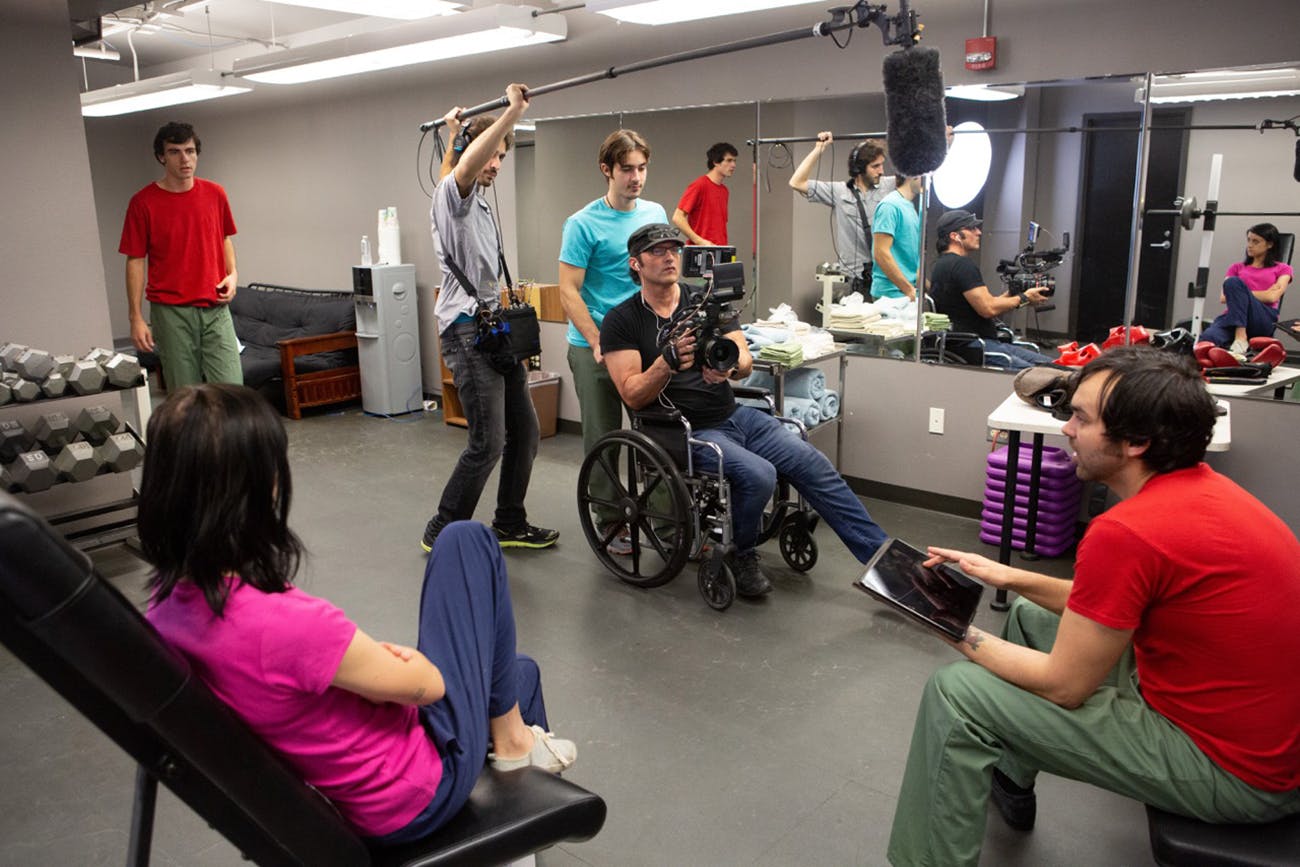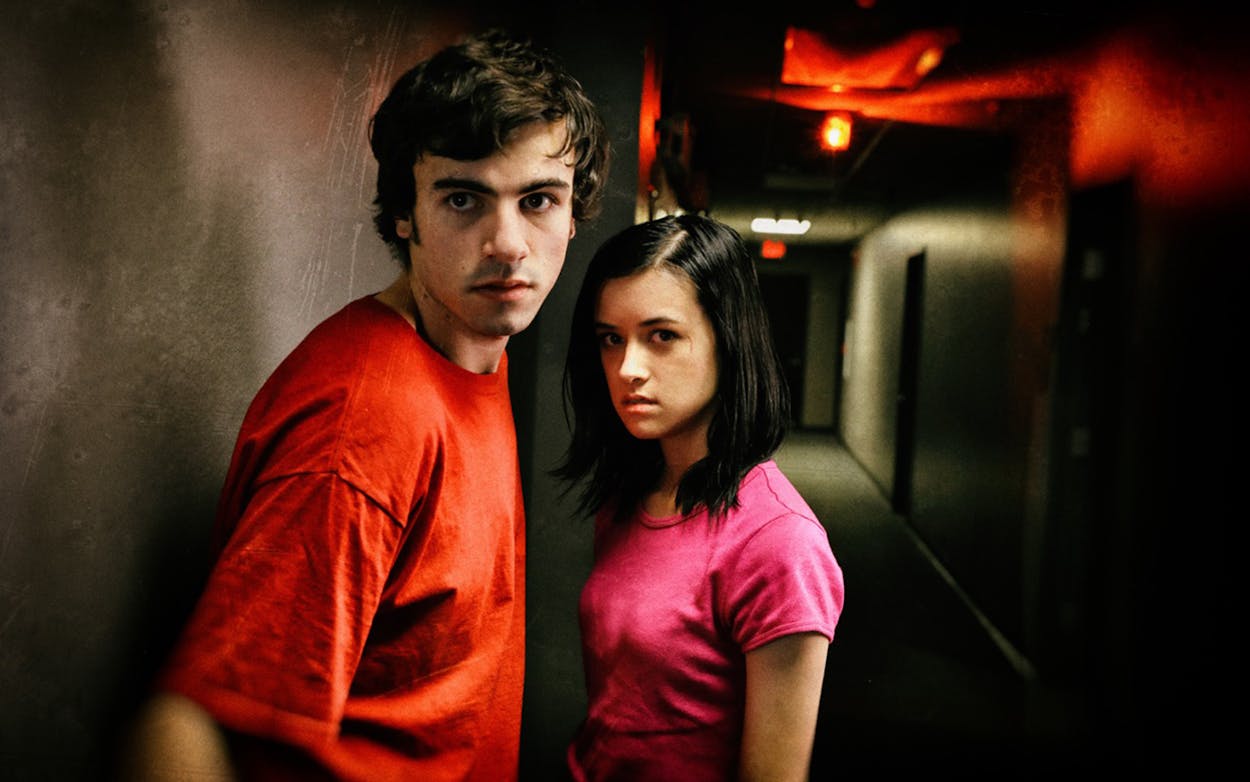Film director Robert Rodriguez famously made his breakthrough debut feature, El Mariachi, on a budget of just $7,000. In his 1995 memoir, Rebel Without a Crew, he explains how he raised even that paltry sum by volunteering for clinical pharmaceutical research trials at an Austin facility called Pharmaco.
In his telling, the life of a professional lab rat isn’t exciting, but it’s not difficult either. It leaves plenty of time to pursue whatever a person enjoys—so long as that can be done indoors and without an elevated heart rate—and it delivers a sizable chunk of money. While confined for days at a stretch as Pharmaco’s human guinea pig, Rodriguez wrote the screenplay for El Mariachi and took notes for another film he planned to write—about the drug-study experience itself. He was going to call it Needles.
It took nearly three decades for that project to come to fruition, and when it finally premiered this week at the 2019 SXSW Film Festival, it had a new title: Red 11. (Rodriguez also recently premiered Alita: Battle Angel, a $200 million wide-release feature.)
Rodriguez’s experiences at Pharmaco may not have been glamorous, but they resonated with me when I first scrounged up a copy of Rebel Without a Crew at Half Price Books shortly after moving to Austin as a 22-year-old. I wanted to write and was tired of low-paying retail jobs that took up too much of my time. Inspired by the book, I looked up Pharmaco, which was still around under a new name. I was accepted for a study in which I dosed myself with a lightly irradiated drug to test something-or-other and was rechristened Black-5104 for the duration of my stay at the facility. The radiation allowed them to track the ways the drug left the body. Every one of my excretions during my eight days of confinement were collected for study. In exchange, the other subjects and I were each paid $3,000.

We four members of the black T-shirted group were all newcomers to the world of clinical pharmaceutical research studies, but we took to it quickly. Each of us had our own reasons for being there: one to raise money to start a nonprofit in Central America, one to supplement his Social Security checks, one to have time to play video games, and me, to quit my day job and write all day. Two of us had no college education, while the others had master’s degrees. The principal side effect was boredom.
On the final day, the gamer made an announcement over lunch. “Well, boys,” he told us. “I think I’ve found my calling.” I didn’t believe I had, but over the next five years, it turned out that the lab-rat life was a more reliable source of income than writing. During much of that time, drug studies were my primary—often my sole—source of income. I volunteered for more in Austin, but ventured elsewhere as well. I once checked into a Wisconsin facility with better food and fewer people to a room—in Austin, eight subjects slept on four sets of bunk beds. A few years later, I ran into my black-shirted gamer friend at a facility outside of Chicago. I also learned firsthand that in London they consider it uncivilized to deny subjects an evening cup of tea, so study baselines are adjusted to factor in the trace amounts of caffeine.
All of that made watching Red 11 a unique experience for me. I’d seen the drug-test setting depicted by people who didn’t know what it was really like (a short-lived Canadian sitcom called Testees didn’t reflect my own experiences), so I entered the SXSW screening with some suspicion. How much would Rodriguez diverge from reality in the name of artistic license?
The answer, to my surprise, was “not very much.” Red 11 is a supernatural thriller, so elements are fantastical, but it’s also surprisingly true-to-life. The little details come across. The food stinks and is determined by the type of study you’re in. Participants are treated like children, and their pay is docked for minor rules violations. Someone with a flashlight checks to ensure that pills have actually been swallowed. A popular—if potentially apocryphal—tale among lab rats is that if a drug makes people sick, they are released with full pay. Interpersonal tensions between subjects boil up and can turn ugly, because a bunch of random strangers are stuck together in a small space while getting prodded with needles. Lab techs gush about subjects with the biggest veins. (Mine are enormous, a fact I learned to love. Veins are ranked on a ten-point scale, and mine were nines. “Gorilla veins,” a phlebotomist called them.) All of that stuff in Red 11 is very much part of the true experiences of someone who’s participated in these studies for a living.
It’s been almost ten years since I got out of the lab-rat race. I took a job loading moving trucks and eventually found a way to transition to writing full time. Red 11 didn’t make me miss doing them, but it did make me nostalgic for the time in my life when it seemed like a good means of making money. The movie is a horror-thriller centered on the discovery of what researchers are really cooking up in the facility’s basement, but even that cinematic embellishment accurately reflects the anxieties that come along with swallowing experimental pills every day for weeks at a time. At the same civilized London facility where I later joined other subjects in sipping tea, a study to test a drug called theralizumab had resulted in six subjects suffering multiple organ failure and permanent disfigurement immediately upon dosing.
Red 11 isn’t a particularly anxious movie—like most of Rodriguez’s work, it’s quick to defuse the tension it builds using broad comedy—but the idea that something bad can happen when you allow yourself to be strapped down, given risky drugs, and start getting your veins stuck with needles shines through. I doubt it’ll further discourage anyone from participating in studies—the money is too good, if you don’t want to actually work—but during the long days and nights inside the facilities, it’ll give subjects something to watch that’ll feel true to the unusual lives that they’re living.
- More About:
- Film & TV
- Robert Rodriguez








